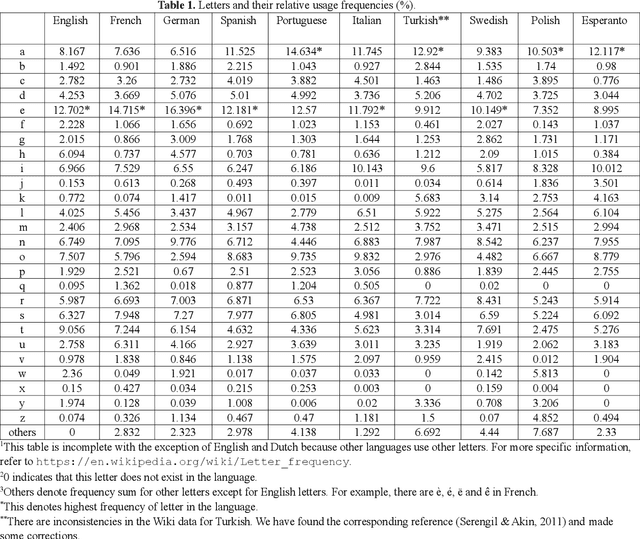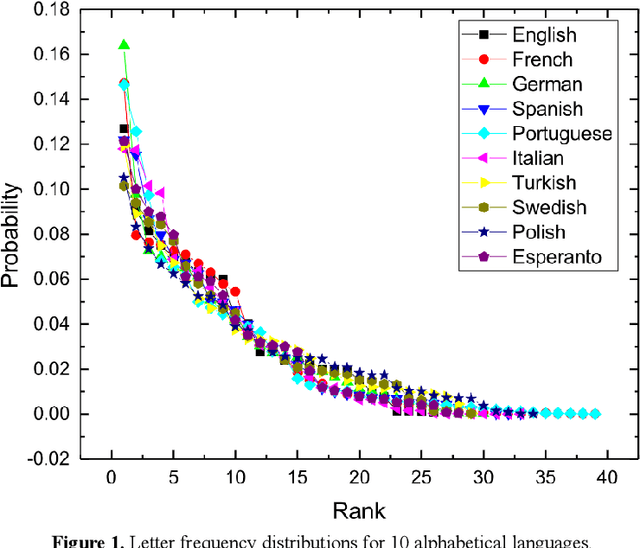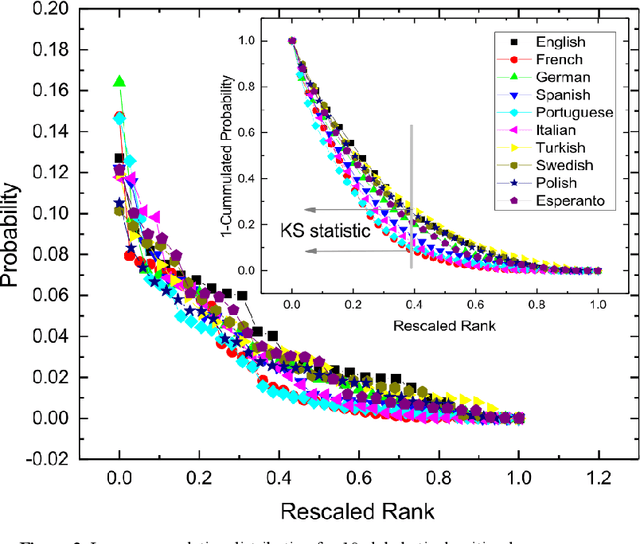The 'Letter' Distribution in the Chinese Language
Paper and Code
May 26, 2020



Corpus-based statistical analysis plays a significant role in linguistic research, and ample evidence has shown that different languages exhibit some common laws. Studies have found that letters in some alphabetic writing languages have strikingly similar statistical usage frequency distributions. Does this hold for Chinese, which employs ideogram writing? We obtained letter frequency data of some alphabetic writing languages and found the common law of the letter distributions. In addition, we collected Chinese literature corpora for different historical periods from the Tang Dynasty to the present, and we dismantled the Chinese written language into three kinds of basic particles: characters, strokes and constructive parts. The results of the statistical analysis showed that, in different historical periods, the intensity of the use of basic particles in Chinese writing varied, but the form of the distribution was consistent. In particular, the distributions of the Chinese constructive parts are certainly consistent with those alphabetic writing languages. This study provides new evidence of the consistency of human languages.
 Add to Chrome
Add to Chrome Add to Firefox
Add to Firefox Add to Edge
Add to Edge